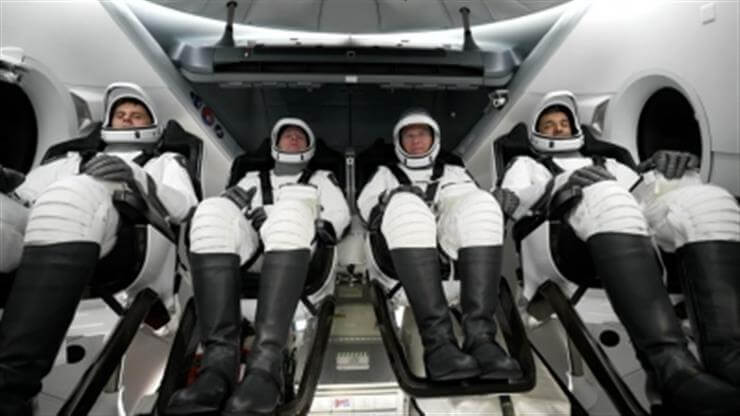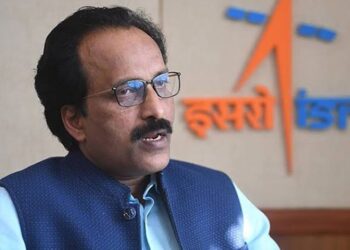SpaceX launched an international crew of four astronauts — two from NASA and one each from Roscosmos and the UAE — for the seventh time on Thursday.
“Liftoff! Dragon takes flight!” NASA wrote on Twitter.
The SpaceX Dragon Endeavour spacecraft launched to the International Space Station (ISS) at 12.34 a.m. ET (11.04 a.m. IST) from the agency’s Kennedy Space Center in Florida.
The mission was supposed to launch into space on Monday, but it was canceled just minutes before liftoff due to an issue with the ignition system.
It prevented data from confirming a full load of the triethylaluminum triethylboron ignition source for the Falcon 9 first stage Merlin engines (or TEA-TEB).
Another launch opportunity on Tuesday was also dropped due to unfavourable weather forecast conditions, NASA and SpaceX had said.
The dragon carrying the crew is now expected to arrive at the ISS after a 25-hour journey and stay for six months conducting scientific research.
NASA astronauts Stephen Bowen and Warren “Woody” Hoburg are on Crew 6, as are UAE astronaut Sultan Alneyadi and Roscosmos cosmonaut Andrey Fedyaev.
Alneyadi will make his first trip to space, representing the UAE’s Mohammed bin Rashid Space Center.
Alneyadi will be the UAE’s first astronaut to travel in a commercial spacecraft. He will join Expedition 69 as a flight engineer once aboard the station.
Fedyaev will make his first trip to space and will also work as a mission specialist, monitoring the spacecraft during the dynamic launch and re-entry phases of flight. He will be a flight engineer for Expedition 69.
Fedyaev will make his first space flight and will also serve as a mission specialist, monitoring the spacecraft during the dynamic launch and re-entry phases of flight. Expedition 69 will have him as a flight engineer.
More than 200 science, technology demonstrations, and maintenance activities are expected to take place aboard the microgravity laboratory.
Studies of how specific materials burn in microgravity, tissue chip research on heart, brain, and cartilage functions, and an investigation to collect microbial samples from the outside of the space station are among the experiments.
This is SpaceX’s sixth crew rotation mission to the station, and Dragon’s seventh flight with people as part of NASA’s Commercial Crew Program.
The SpaceX Dragon Endeavour spacecraft previously flew NASA’s Crew-1, Inspiration4, and Axiom Mission-1 astronauts.
Teams installed new components as part of the refurbishment process, including the heat shield, nosecone, trunk, and all forward bulkhead and service section Draco engines. These hardware components assist the spacecraft in surviving reentry heat, supporting docking and cargo space, and providing steering and thrust.
During Crew-6’s stay aboard the orbiting laboratory, cargo spacecraft such as the SpaceX Dragon and the Roscosmos Progress will arrive.
During their expedition, Crew-6 is also expected to welcome the agency’s Boeing Crew Flight Test astronauts and the Axiom Mission-2 crew.
At the end of the mission, Dragon Endeavour will undock autonomously with the four crew members aboard, depart the space station, and re-enter the Earth’s atmosphere.
Source:IANS







 Finance
Finance







